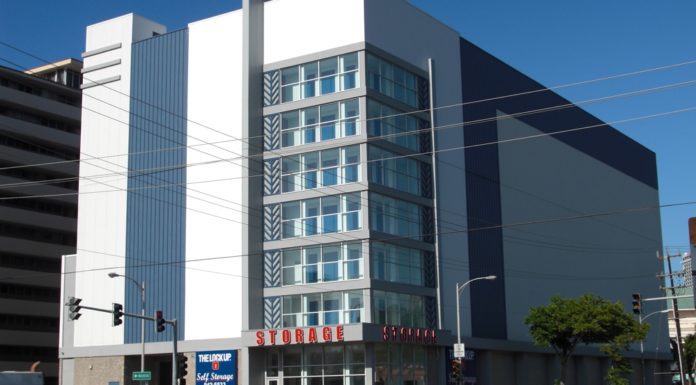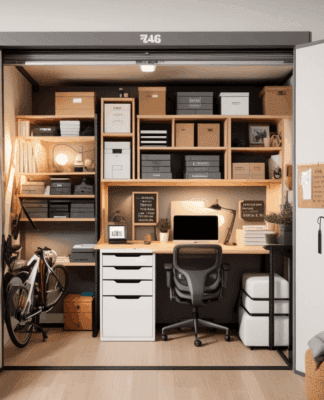
When selling your home, one of the most important steps is making it look its best for buyers. While a deep clean is non-negotiable, staging your home correctly can make a huge difference in the perceived value and appeal to potential buyers. Unfortunately, there can be a lot of conflicting information on what to do or not to do when it comes to home staging. To help you make the most out of your home-selling experience, here’s a step-by-step guide to staging your home.
Some Important Information About Home Staging
Staging your home is pretty straightforward. The goal is to bring out the best features of each room without overcrowding it. It’s a way of marketing your home to potential buyers and helping them envision themselves living there in the future. Home staging is done to help expedite the selling process and increase overall property value. It’s an art and a science that tries to get buyers to develop an emotional attachment to your home so they begin to visualize their life unfolding in each room. If you’re not able to stage the entire home, the living room, master bedroom, and kitchen are the best rooms to focus on. Everything from décor, paint color, smell, and furniture goes into home staging, making it a fairly meticulous task. However, the effort is well worth it, as 82% of buyers find it easier to visualize a property as their future home when it’s staged.
Staging Your Home: A Comprehensive Guide
Although you can stage your home on your own, some people prefer working with a professional to get the most out of their efforts. If you’d prefer to DIY, here’s a step-by-step home staging guide.
1. Declutter Your Home
The first step in staging your home is going through every room and decluttering as much as possible. You want to remove any knick-knacks or unnecessary “stuff” filling your shelves, tables, and furniture. Clutter tends to distract the eyes of your buyer, and it will be the first thing they see when they walk into a room. This takes away from the room’s allure and will waste the rest of your staging efforts. Minimalism during staging is preferred, so unless there’s a distinct purpose for an item, pack it away in a box, label it, and put it in your self-storage unit.
2. Remove All Personal Items
When you’re decluttering, don’t forget to remove any and all personal items. This includes things with your family’s name on it, pictures of your family, or anything that may resemble a family heirloom. Potential buyers have a more difficult time envisioning their life in a home if they’re constantly reminded of the current resident. You can replace pictures on the wall with people-less art or scenery, but photographs should be packed safely away. If you want to keep them out until your home sells, put them in a small basket under a blanket or in a closet so you can easily put them back out once the buyers have toured your space.
3. Perform a Deep Clean
Once you’ve packed all the extra clutter and personal items, go through your home and do a thorough deep clean. This should include any hard-to-reach areas, underneath furniture, and all the nooks and crannies of cabinets, appliances, and closets. Clean homes maintain the allure of more valuable homes, so it’s worth the added effort.
4. Make Minor Repairs
You might come across a few scratches on the wall or broken nails when cleaning. Make a list of these so that you can go back and repair them before you show your home. If you notice any major repairs that need attention, it might be worth scheduling an inspection and determining the cost of fixing them. Although you won’t necessarily need to fix everything, a few things can drastically affect property value.
5. Boost Your Kitchen Aesthetics
The kitchen is the heart of your home, so it’s worth taking a little extra time to ensure it looks its best. Although you should still declutter and clean the pantry, cabinets, countertops, and refrigerator, you may also benefit from giving your kitchen a small facelift. This could include repainting the kitchen cabinets, adding new handles, or upgrading the appliances.
6. Add Extra Storage
One of the first things potential buyers look for in a new home is storage. Unfortunately, storage options aren’t always the best, especially in smaller homes. But when you show them various options for keeping their things safe and out of the way, you can draw their attention away from the fact that you only have one closet downstairs. Just don’t go overboard here; you don’t want them to think you need hundreds of bins or baskets to keep things organized within your home.
7. Consider Light Reflecting Colors
If you have a lot of scuffs or scratches on the walls, adding a fresh coat of paint may be worth your time. This small act can make a huge difference in the look and feel of a room, which, in turn, affects overall property value. Try to stick to whites, neutral colors, or natural hues to create a space appealing to various buyers. Light reflective colors are best for opening a room and creating a more welcoming environment.
8. Renovate the Bathroom
Another area of the house that you may want to consider renovating is the bathroom. Doing so gives buyers the impression that your entire home has been renovated and updated over the years. You can utilize small renovations such as upgrading the toilet, shower, or sink as long as it helps boost the modern feel of the space.
9. Try New Layouts
Next, start to rearrange the furniture in each of your rooms. Try new layouts, experiment with different focal points, and see what looks best. You might be surprised that your living room feels three times bigger when the couch faces a different direction. Or you may realize that your bedroom is more easily navigable when a large dresser is removed and replaced with a small vanity table. Do some research, move things around, and see what looks best for each room.
10. Add Some Accessories
Once you’ve got all of the furniture in place, go back and focus on the details. You don’t want to reintroduce a bunch of clutter into the room, but a few key accessories can make a world of difference. Add a colorful throw blanket to the back of a couch, a functional lamp near a reading chair, or even a stylish rug underneath the kitchen table.
11. Use Real Plants
Another great way to accessorize is to add real plants to each room. This creates a very comfortable environment that can be alluring to many prospective buyers. However, if you’re not able to care for the plants in the process of selling your home, it’s best to forego them altogether.
12. Extend the Staging to Your Yard
Finally, before you can say that you’ve finished staging your home, don’t forget to head outside and touch up the front yard and the backyard. You don’t need to hire landscapers to completely renovate your yard, but things should be pruned, cleaned, and well-maintained. A fresh coat of paint on the front door, a few flowers, and a clean walkway are easy ways to boost your curb appeal. If you have a backyard, make it look cozy and welcoming to give potential buyers a glimpse into what they could experience when they move in.
Staging your home is one of the best ways to sell it for its highest value, but that doesn’t mean you need to throw all your belongings away in the process. Instead, utilize a climate-controlled self-storage unit from The Lock Up Self Storage. We offer a variety of self-storage units in varying sizes to help keep your belongings safe, accessible, and in good condition while you’re staging your home, moving, or simply if you need more room. With flexible leasing options, you can use our self-storage for as long as you need, whether short-term or long-term. Our facilities have top-of-the-line security features like perimeter alarms, gated access codes, and 24/7 CCTV. To learn more about our self-storage units at The Lock Up, give us a call today at 1-866-327-LOCK or stop by one of our locations for a tour of the facility.


















